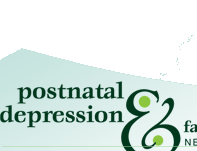 |

Methylphenidate
This section is designed to inform professionals
For consumer information, see the fact sheet
- Methylphenidate is licensed in New Zealand for treatment of Attention Deficit Hyperactivity Disorder and Narcolepsy.
- Last updated: August 2010.
Summary
- The safety of prenatal exposure to Methylphenidate is not well established.
- However, pregnant women with severe ADHD might require treatment to maintain their level of function.
- It has also been noted (5) that there is often a high rate of unplanned pregnancies in this group and therefore there is potential for inadvertent exposure to Methylphenidate.
- Currently, there is not enough data to make any clear recommendations regarding Methylphenidate’s safety in pregnancy.
- Limited data available suggests low infant exposure during breastfeeding.
- Methylphenidate commonly caused slowing of growth when used inchildren for extended periods though there has been no clear evidence to show this effect in pregnancy and lactation the effect on growth is not know.
The decision to use psychotropic medication in pregnancy should be made by the woman and her partner on the advice of their doctor. It is essential for the clinicians to inform the woman and her family what the current state of knowledge is, including uncertainty and that an informed choice is made. Weighing up the risks versus the benefits in each case is unique.
Use in Pregnancy
Category B2
- In a study investigating perinatal outcome in mothers who used illicit cocaine or methamphetamine (4) higher rates of prematurity, intrauterine growth retardation and smaller head circumference were found in the illicit users compared to control drug-free mothers.
- Infants of drug-using mothers also had more complications during the
neonatal period (abnormal sleeping patterns, poor feeding, tremor and hypotonia). Of note, low socioeconomic status, lack of prenatal care, poor nutritional status, and use of tobacco and alcohol further confound such clinical presentations. However, multiple regression analysis revealed significant independent negative contributions to gestation age, birth weight, length and head circumference.
- We are not sure that this population group outcomes can be extrapolated to those mothers who are prescribed Methylphenidate.
- Exposure to attention deficit-activity disorder medications during pregnancy had been summarised in 2007 (5).
- The authors noted little data on the saftey of Methylphenidate use during pregnancy. They reported a total of 63 cases of Methylphenidate exposure in the literature by 2007. They commented on a report (6) that monitored first-trimester Methylphenidate exposure (as part of a larger study) which revealed no significant increase in malformations.
- Another group of 13 newborns who were exposed to Methylphenidate during early pregnancy (7) were examined and one cardiac defect and major malformation was found.
- Further, a chart review (8) of infants born to mothers who used intravenous Methylphenidate demonstrated a high incidence of premature delivery (21%), growth retardation (31%) and demonstrated symptoms of withdrawal (28%). In this study, low normal intelligence was also seen in four of 21 infants that had developmental follow-up. Rightfully so, the authors (5) caution against direct applicability of the study as there was no control group and there wer significant confounders such as concurrent use of cigarettes (34%), alcohol (71%) and other drugs (26%) during the pregnancies.
Use in Lactation
Category L3
- A review of psychotropic drug use during breastfeeding (2) mentioned few studies of Methylphenidate use in pregnancy and lactation. Of the limited data, Methylphenidate shows a milk to plasma ratio that varies from 1.1 to 2.7 and a relative infant dosage that is 0.2% of the maternal dose.
- A case study (3) also determined a low infant dose of 0.16% of maternal dose in a mother whom recommenced Methylphenidate postpartum.
- Three mothers taking Methylphenidate 52mg/d (range 35-80mg/d) had milk and blood levels obtained. The mean milk to plasma ratio was 2.7, the calculated infant dose was 2.9mcg/kg/d and the relative infant dose was 0.7%. Although Methylphenidate transferred well into milk, the infant dose via milk was low. The authors conclude that Methylphenidate is not contraindicated during breastfeeding, however a decision to breastfeed should be the subject of a risk benefit analysis (1).
References
(1) Hackett, LP., et al. Infant dose and safety of breastfeeding for Dexamphetamine and Methylphenidate in mothers with attention deficit hyperactivity disorder. Ther Drug Monit (2005) 27(2): 220.
(2) Fortinguerra, F., et al. Psychotropic drug use during breastfeeding: a review of the evidence. Pediatrics (2009) 124: e547-e556.
(3) Spigset, O., et al. Excretion of Methylphenidate in Breast Milk. Am J Psychiatry (2007) 164(2): 348.
(4) Oro, AS.; Dixon, SD. Perinatal cocaine and methylphenidate exposure: maternal and neonatal correlates. J Pediatr (1987) 111: 571-578.
(5) Humphreys, C., et al. Exposure to attention deficit hyperactivity disorder medications during pregnancy. Can Fam Physician (2007) 53: 1153-1155.
(6) Heinonen, OP., et al. Birth defects and drugs in pregnancy. (1977). Littleton, Mass: Publishing Sciences Group. Quoted by Humphreys, C., et al. Exposure to attention deficit hyperactivity disorder medications during pregnancy. Can Fam Physician (2007) 53: 1153-1155.
(7) Briggs, GG. et al. Drugs in pregnancy and lactation. 7th Ed. (2005). Philadelphia, Pa: Lippinocott Williams and Wilsins. Quoted by Humphreys, C., et al. Exposure to attention deficit hyperactivity disorder medications during pregnancy. Can Fam Physician (2007) 53: 1153-1155.
(8) Debooy, VV., et al. Intravenous pentazocine and methylphenidate abuse during pregnancy: maternal lifestyle and infant outcome. Am J Dis Child (1993) 147(10): 1062-1065. Quote by Humphreys, C., et al. Exposure to attention deficit hyperactivity disorder medications during pregnancy. Can Fam Physician (2007) 53:1153-1155.
|
 |



